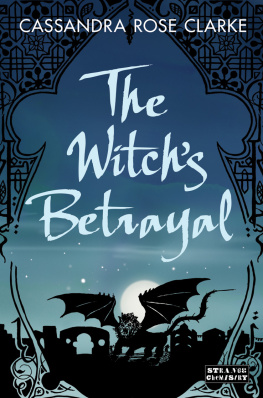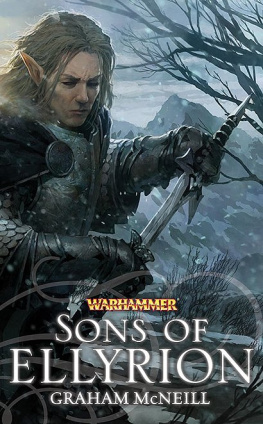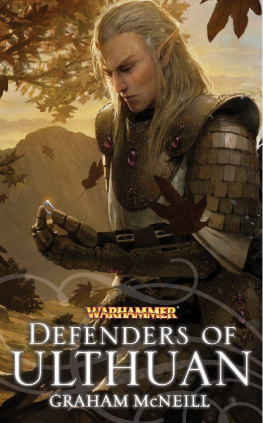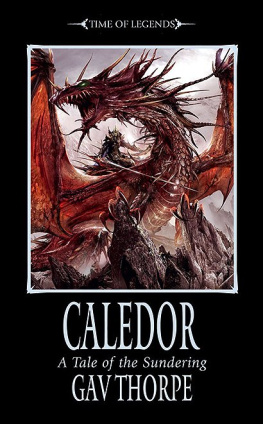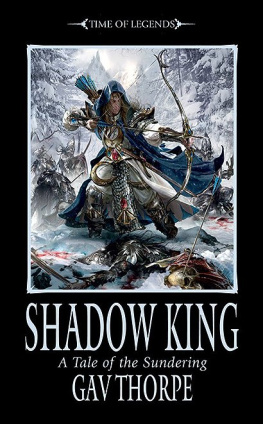The End Times:
The Curse of Khaine
(Gav Thorpe)

The world is dying, but it has been so since the coming of the Chaos Gods.
For years beyond reckoning, the Ruinous Powers have coveted the mortal realm. They have made many attempts to seize it, their anointed champions leading vast hordes into the lands of men, elves and dwarfs. Each time, they have been defeated.
Until now.
In the frozen north, Archaon, a former templar of the warrior-god Sigmar, has been crowned the Everchosen of Chaos. He stands poised to march south and bring ruin to the lands he once fought to protect. Behind him amass all the forces of the Dark Gods, mortal and daemonic. When they come, they will bring with them a storm such as has never been seen. Already, the lands of men are falling into ruin. Archaons vanguard run riot across Kislev, the once-proud country of Bretonnia has fallen into anarchy and the southern lands have been consumed by a tide of verminous ratmen.
The men of the Empire, the elves of Ulthuan and the dwarfs of the Worlds Edge Mountains fortify their cities and prepare for the inevitable onslaught. They will fight bravely and to the last. But in their hearts, all know that their efforts will be futile. The victory of Chaos is inevitable.
These are the End Times.




This is where it all began, before history was recorded. A forest raised from sacred ground by the gods themselves, seeded by the Great Powers that shaped the world. Beneath jade and golden boughs, the elves were taught how to manipulate the energies that permeated the world and its surrounds: they learned magic.
A matriarch ruled over them, and in time she became known as the Everqueen, her immortal spirit reborn into her offspring with each passing generation. These were times of accord, of peaceful bliss and innocent harmony.
Let us be honest and call it what it was: grave naivety.
There were other powers, far older and greater than the tutors of the elves. They had been wronged, their domains trespassed upon, their authority stolen by upstarts. In their anger they laid low the Old Ones and staked their claim to the world.
Mighty was their anger and terrible were the hosts they poured forth to conquer the lands crafted by the usurpers. The pure magic of the timeless aeons was broken, split into the Eight Winds, and the gods of the elves were laid low, exposed as powerless figments. One power ruled, and one power alone: Chaos.
The daemons were their servants. The elves suffered the daemons wrath more than any, for the elven isle, the realm of Ulthuan, was steeped in the magical energy that sustained the avatars of the Chaos Powers. Great was the torment and slaughter visited upon the Everqueen and her followers, and in the strife of the elves the Great Powers drank rich from despair and hope, fear and rage.
Yet the dominion of Chaos was not to be.
Not then.
Aenarion, spear-wielder, scale-clad, dragon-rider, united the elves and fought the daemons. Sacrificing himself in the flames of Asuryan, Aenarion was reborn as a figure of myth, the Phoenix King, and his presence was anathema to the daemons.
Even so, Aenarions defiance was not enough. Still the daemons came.
Caledor the Dragontamer, magic-wielder, mage-lord of the southern mountains, allied his cause with Aenarion and the two great leaders of the elves stemmed the tide of Chaos for a millennium.
And this was not enough.
Already imbued with the power of one god, Aenarion sought the aid of another when his beloved wife Astarielle the Everqueen was slain, and he believed his children dead also. Aenarion took the Sword of Khaine from its bloodstained altar upon the Blighted Isle. The Widowmaker, the Bane of Gods, the Deathshard. Nothing, not mortal or daemon, could stand before his ire.
But bloodshed alone could not defeat the power of Chaos. Strife is their fodder, war their platter. It was Caledor Dragontamer that devised the true path to victory. He constructed a network of standing stones upon Ulthuan, making a pattern of monoliths and lodestones that created a magical vortex, siphoning the energy of the daemons out of the mortal realm.
At the end of the war, Caledor and his mages were trapped within the vortex they had created and Aenarion was mortally wounded as was his dragon, Indraugnir. The Phoenix Kings final act was to return the Sword of Khaine to its shrine upon the Blighted Isle, but neither king nor faithful steed was seen again.
So the victory of the elves should have been. The daemons were banished, trapped in the Realm of Chaos and the Northern Wastes. The elves should have claimed dominion over the world and ruled benevolently as the inheritors of the Old Ones and Chaos would have been thwarted.
Chaos is not so easily defeated.
What they could not win with war, the Old Powers sought with guile. The whispers of the Chaos Gods polluted the counsel of the elves as they sought to choose a successor to Aenarion.
* * *
The princes met in the Glade of Eternity, a great amphitheatre of trees at the centre of which stood a shrine to Isha, the goddess of nature, matron of the Everqueen. Grown of twining silver roots and branches, with emerald-green leaves festooned with blooms in every season, the Aein Yshain glowed with mystical power. By the light of the moons and the stars, the First Council convened, bathed in the twilight of the open skies and the aura of the blessed tree.
Morathi and Malekith were there. Dark-haired and coldly beautiful, the seeress wore a dress of black cloth so fine that it appeared as a diaphanous cloud that barely concealed her alabaster skin. Her raven hair was swept back by bands of finely-woven silver threads hung with rubies, and her lips were painted to match the glittering gems. Slender and noble of bearing she stood, and bore a staff of black iron in her hands.
Malekith was no less imposing. As tall as his father and of similarly dark eyes, he wore a suit of golden mail, and a breastplate upon which was embossed the coiling form of a dragon. A long sword hung in a gold-threaded scabbard at his waist, its pommel wrought from the same precious metal, a dragons claw grasping a sapphire the size of a fist.
With them came other princes of Nagarythe who had survived the fighting on the Isle of the Dead. They were dressed in their fine armour, and wore dark cloaks that hung to their ankles, and proudly bore the scars and trophies of their wars with the daemons.
The sinister princes of the north were arrayed with knives, spears, swords, bows, shields and armour wrought with the runes of Vaul, testaments to the power of Nagarythe and Anlec. Banner bearers with black and silver standards stood in attendance, and heralds sounded the trumpets and pipes at their arrival. A cabal of sorcerers accompanied the Naggarothi contingent, clad in robes of black and purple, their faces tattooed and scarred with ritual sigils, their heads shaved.



